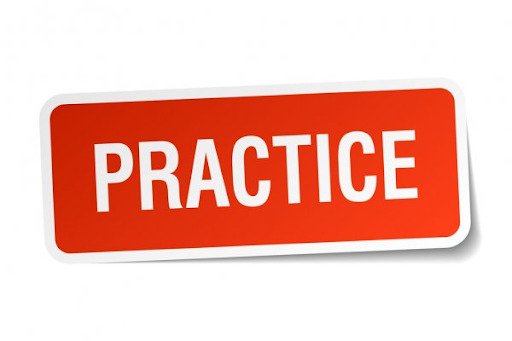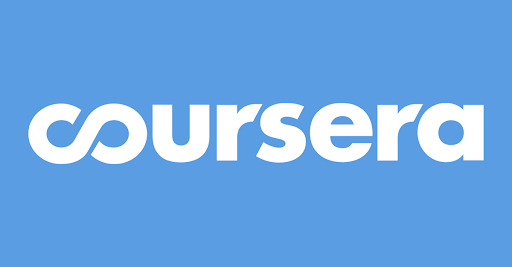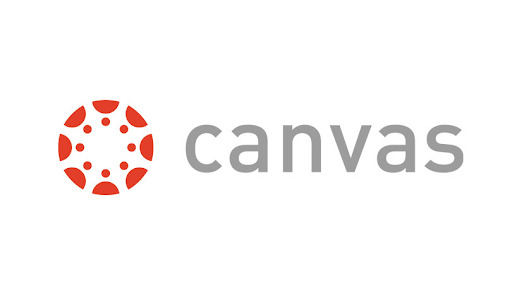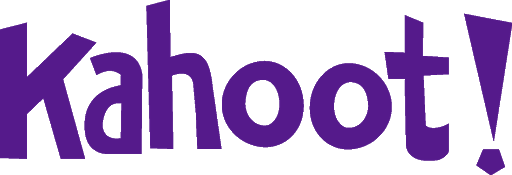Whether it's related to memory, voice, swallowing, reading, speech, or language issues, I want to connect speech-language pathologists and patients with the resources needed for therapeutic success. Check out my website at speakupthinkup.com.
Don't wanna be here? Send us removal request.
Text
Check out this article https://bit.ly/3bjWBGX that was authored working with @wikihow and published on wikiHow’s website.
3 notes
·
View notes
Photo

Happy holidays and here’s to a new year! Thanks to those who’ve checked out my blog thus far. I'm looking forward to posting more here and at my website at speakupthinkup.com.
#happynewyears#happynewyear2020#happyholidays#happyhanukkah#merrychristmas#newyear#blog#blogging#write#writing#speechtherapy#slp#resources#slpresources#speechtherapyresources
0 notes
Photo


If interested, check out my new website at https://www.speakupthinkup.com/ or my Instagram by scanning the specialized QR code above. Thanks for taking the time to read this post!
#newwebsite#newinstagram#instagram#website#resources#improvement#therapy#speechtherapy#slp#materials#development#blog#reading#cognition#memory#attention#language#communication#voice#swallowingtherapy#dysphagia#aphasia#stroke#TBI#strokesurvivor#TBIsurvivor
0 notes
Text
Don’t Forget to Take Care of Yourself

Hello, parents, patients, and caregivers! In this installment on the Speak Up, Think Up! blogosphere, I wanted to broach an important topic that I feel cannot be discussed enough. When you are taking care of someone else, don’t forget to take care of yourself. You’ve probably heard that you need to put on your own oxygen mask in a plane before you help to don somebody else’s. I think this statement can also somewhat apply to all you caregivers out there. Whether you’re taking care of your significant other, your daughter, your son, your ward, your parent, or anyone in between, you need to (to the best of your ability) take care of yourself as well.

Allow yourself some ‘you’ time
Constantly being with those dependent upon you can be a tiring experience, so it is important to set aside time for yourself. Even if it is just little moments in the day, it can make a huge difference for your well-being. Little breaks such as changing your environment or taking a step outside can be beneficial for you. It is also okay to verbalize when you need some time to yourself and you can try to prepare the one you care for by letting him/her know that from 6 p.m.-7 p.m. (for example) you plan to read by yourself. Of course, there are barriers to such instances of ‘you’ time, but there has to be a balance. Otherwise, you are much more likely to overextend yourself or overdo it. Then, you won’t be able to as effectively help others or yourself.

Take care of your mental well-being
Whatever brings you peace or a sense of well-being, practice it regularly. Meditation, prayer, and mindful breathing can help you to destress and refocus. Try to set aside a set time to practice mental well-being; however, that looks for you. If you’re feeling overwhelmed, allow yourself some time to relax. Know what makes you happy. Listen to music, read from a favorite book, or go for a brief walk. Then, tackle the current challenge you’re facing.

Take care of your physical well-being
Research has shown that exercise is important for overall health, but also for general well-being. It functions as an effective destressing tool. Strive to establish a regular exercise routine and stick to it. Depending on how you plan your exercise, this may also be a golden opportunity for some ‘you’ time. Put on your favorite tunes, audiobook, or podcast, and work on yourself. Most of life’s stresses can wait and exercise can help you to be more ready to face a given day’s issues. Additionally, realize that exercise doesn’t have to involve an hour-long routine; quick exercise sets squeezed in throughout the day can also be quite beneficial.

Talk about how you’re thinking & feeling in a healthy way
I feel that it is all too common for people to suppress their thoughts and feelings relative to any given situation and keep feelings and thoughts pent up inside rather than sharing them. This may not need to be said, but I’m going to say it anyway. This is not good for you or those around you. I often find myself telling this to patients as well. Withholding thoughts and feelings especially revolving around stressors related to disorders, diseases, and associated symptoms can have a negative impact over time; that will likely increase progressively until these thoughts and feelings are effectively addressed. I acknowledge that sharing these thoughts and feelings are likely not going to be easy. I don’t claim to fully relate or understand either. I’ve likely not been in your given situation, but I personally have seen the benefit of opening up and sharing more with my loved ones. By doing this, I’ve grown closer to them and they have grown closer to me. Vulnerability is scary, but it is necessary to maintain a healthy balance between a caregiver and a loved one. Strive to be candid, be kind, and be understanding in your interactions when discussing these heavier topics. Be open to feedback and be ready to compromise. However, your feelings matter as much as anyone else’s, so please take care of yourself. Then, you can take care of those around you.
Thanks for reading and I hope you get some benefit out of reading this blog. If you enjoyed this post, you may enjoy my other posts on my blog here on Tumblr as well as on my website, Speak Up, Think Up!
#caregiver#lovedone#dementia#alzheimers#aphasia#stroke#strokesurvivor#keepgoing#mentalhealth#wellbeing#takecare#happyholidays#speechtherapy#resources#therapy#speech#cognition#memory#attention#positivevibes#positivethoughts#feelings#thoughts#feels#happiness#contentment
0 notes
Text
The Importance of Practice

Hello, all! Today, I wanted to talk to you about home practice and why it matters in the first place. When you think about self-improvement, recovery, or therapy, what do you think of? Do you envision a magical pill that you take, and all your problems miraculously go away? Or do you believe that improvement comes from effective, organized practice? Well, I’m here to say that at least when it comes to speech-language pathology, targeted practice is the path to recovery whether it is for voice, swallowing, cognitive, speech, or language therapy. Personally, I appreciate this truth. I feel that all too often we are prescribed a medication or an ointment, rather than empowered to achieve our goals or recovery by our own actions. Now, don’t get me wrong; I’d love for there to be a cure for any one of the symptoms I address in therapy, but until all these issues are in the rearview mirror, effective practice and therapy are the best way forward.

What should practice look like?
Any kind of practice must be based on your current level of ability. For example, if you can only effectively lift 20-pound weights, it doesn’t make sense to suddenly increase the weight to 50 pounds. Simply increasing the amount of resistance or increasing the difficulty of the practice alone will not bring about the desired result. Likely, it will just leave you feeling frustrated or when it comes to weightlifting feeling significant pain.
Practice needs to also take into consideration your interests and strive to be as practical as possible. This is especially true for adults. If an adult is working on improving his/her ability to follow through on tasks, it is better to use practical activities where strategies can be integrated in real-time (i.e., incorporating a written list and alarm system to help with effectively cooking and making a meal).
Additionally, practice needs to be geared to specifically what you are working on. For instance, if you are working on improving your reading ability, it doesn’t make sense for you to be practicing pronouncing speech sounds within certain words.
Practice also needs to make sense. So, if you’re not sure why you are being encouraged to complete a task, ASK...why am I doing this? Whether a given task is being recommended by your clinician or by your mom, he/she needs to be able to explain his/her recommendation in a way you can understand.

I am sure you have heard the token phrase that it takes 10,000 hours of practice to become an expert at something but is there such a thing as too much practice. I’m of the mindset that you can practice too much, but you can also practice too little. When it comes to doing therapy tasks at home, what’s the middle ground? Well, unfortunately, I can’t give a definitive answer to that as it is very individualized. However, I do encourage you to pay attention to yourself, your mind, and your body.
Your body is pretty good at letting you know that you need a break or that you’ve done enough for that day. Now, I’m the first to admit that I’m not always the best at acknowledging and responding appropriately to what my body is telling me. I do try to be more responsive to when I may need a break; I do this by reminding myself that I tend to be less effective at completing tasks and doing activities when I’m feeling more tired or burnt out. I also understand that sometimes a task cannot be avoided, but with appropriate preparation and time management, you can better prepare yourself and ready yourself for more effective completion of any given task.
When it comes to learning I think understanding this is really important, because if you’re exhausted, you’re not likely going to retain as much information as when you are well-rested and focused during a given activity. This is also applicable when you are trying to establish new behaviors, habits, and routines. So, remember that managing your energy level and knowing when you are most alert help to establish when you may want to tackle more demanding tasks.

Additionally, know that there are systems out there for time management and I encourage you to incorporate them, especially if it seems like you’re having difficulty establishing a good routine for completing therapeutic exercises. One example of this is the Pomodoro technique where you work for 25-minute periods and then take 5-minute breaks. More traditional practice methodologies incorporate a 50-minute practice schedule and then 10-minute breaks. These are just 2 examples of time management methods for practice.
I think it is also essential to be realistic and have appropriate expectations for therapeutic progress and growth. By setting realistic expectations and achievable goals, you’re setting yourself up for the greatest likelihood of success. Success in practice will likely motivate you to keep working harder and keep pushing yourself. Realize that if you are not making the desired amount of progress you may want to increase the amount of practice. We as people and myself included can settle into doing the bare minimum; just checking off that we did some task without actually applying any true effort to complete it effectively. You’ve probably heard that you get out of something what you put into it, and I think this statement readily applies to therapy. Keep this in mind as you incorporate any kind of therapy or practice at home.
Know that life is going to get in the way sometimes and you may not always be able to set up a perfect environment for practice, but don’t let ‘perfect’ get in the way of ‘good’ and ‘great’. Make the time and practice. When it comes down to it, starting to practice and especially regularly practicing are the biggest and most important first steps to therapeutic growth.

Lastly, I think it is pertinent to try to measure your own progress. Of course, your clinician or therapist will provide you with information on how you are doing and improving. However, taking ownership of your therapy is an integral component of optimal growth and progress. This is your life we’re talking about after all, and I personally want to see every individual I work with succeed. However, sometimes people don’t make the progress I think they’re capable of; that I know they’re capable of and I think part of the problem is lack of ownership when it comes to therapy. I know life is challenging and it’s hard for me to even fathom the difficulty some individuals are going through. But when you take the positive step to seek out therapy to improve yourself, you’re striving for something more. So, keep striving. Empower yourself by tracking your progress, by noting the little successes in every day, and by incorporating consistent, poignant practice.
Thanks for reading and I hope you enjoyed this post. I hope it gave you some perspective on practice and working towards goals. Please check out other posts on my blog.
#growth#improvement#therapy#speechtherapy#better#bebetter#practice#exercise#readingtherapy#routine#behavior#modify#voicetherapy#swallowingtherapy#speech language pathology#cognitivetherapy#memorytherapy#attentiontherapy#dontgiveup#keeppushing#keepgrowing#keepgoing
0 notes
Text
Vocal Fatigue & Hoarseness - The Zoom ‘Sickness’

Hello, fellow clinicians, Zoomers, and teleconferencers!
My fellow SLPs and I were talking and the discussion around voice use during telehealth sessions came up and in turn, we all realized something. We figured out that our voices are being negatively impacted seemingly secondary to the increase in telehealth treatment sessions we have been doing. Ironic I know, but this irony is not new to our field, as voice problems (typically vocal fatigue) are all too common amongst the very providers that offer voice therapy. As telehealth therapy services and teleconferencing in general are seemingly going to become progressively more common, I think it’s pertinent that we take a real look at how to use our voices during telehealth and teleconferencing sessions.

Vocal Use & Maintenance Strategies for Online Communication
Increase Hydration:
We all know hydration is important to vocal health, but do we always prioritize hydration for ourselves? Waking up with a dry mouth is commonplace especially here in Las Vegas and a perfect example of what happens to you when you haven’t drunk enough water in a while. Personally, I strive to maintain appropriate water intake, but sometimes I lapse or forget to bring water somewhere when I’m out and about. I typically notice the effects of this by the time I get back home. So, it’s best to keep water nearby and drink water regularly throughout the day.
Use Vocal Exercises:
This may seem like a ‘duh’ recommendation to speech-language pathologists (SLPs), but if you notice your voice seems tired or hoarse, perhaps you should try voice exercises. As someone who has a history of overusing and misusing his voice, I’ve made a conscious effort to practice voice exercises more regularly especially if I’m noticing increased tiredness or vocal fatigue. I’ve noticed a benefit from completing these exercises regularly. For you non-SLPs, doing voice exercises can help to improve your overall voice, lessen vocal tiredness, and improve your voice recovery after voice misuse.
Practice Vocal Rest:
I know this may seem like another obvious recommendation, but I’m the first to admit that actively practicing vocal rest is easier said than done. However, we are definitely capable of setting aside the time for vocal rest, especially on the weekends and after our workdays have ended. Extended vocal rest can often give you an immediate boost to voice, especially when experiencing a more tired or hoarse voice.

Keep the Right Distance:
However, you are communicating online, it is important to keep yourself close to your communication device, so that you’re not so far away. The closer you are the less loudly you must speak, which lessens the likelihood of vocal misuse or abuse. However, also make sure you’re not too close as it will likely distort your voice and lower the overall quality of your teleconferencing or teletherapy session.
Close Unnecessary Apps and Programs Running in the Background/Free Up Your Wi-Fi Bandwidth:
The better the quality of your telehealth session or teleconferencing call the better your voice will sound. In turn, you won’t need to repeat yourself unnecessarily and will be heard more effectively with less effort and quieter voice. To ensure maximal functionality, close all unnecessary apps and programs on your computer or device. This will allow your device to run optimally and ideally translate to better, more effective teleconferencing and teletherapy. Additionally, ensure that you are accessing the best Internet connection possible. The more powerful the Internet connection the better the session will run. Discourage others from using the Internet in your house while you are using a teleconferencing or teletherapy platform, especially if it is something that uses more bandwidth like online video games or streaming videos or movies. These additional drains on your Internet are likely to negatively impact your audio and video quality. Lastly, let’s be realistic; if you’re using a phone instead of a computer, you’re less likely to get the best performance out of any teleconferencing or teletherapy platform. So, when able, use a computer.
Consider an External Microphone or Headset:
For people that plan on using remote video/audio platforms regularly, I think it is worth it to get a good headset and microphone to enhance your quality, so that you’re better understood. You’re likely only going to get so far using just the built-in audio on your device. There are many options out there so do your own research and determine what is best for you and your needs.
Thanks for reading and I hope you get some benefit out of the strategies discussed here. I encourage you to try at least one of these strategies if you’re using any kind of teleconferencing platform with regularity. Incorporating these strategies consistently can help you to have better voice and maintain your voice quality for longer. I also wanted to let you know that I’m working on a website which will be available at speakouthinkout.com.
#voice#Zoom#vocalfatigue#vocaltiredness#vocalrest#audio#teleconferencing#video#teletherapy#telesession#voicetherapy#voiceexercises#speechtherapy#voice therapy#improve voice#better voice#bettervoice#self-improvement#healthyloudness#fatigue#videocall#televoice
0 notes
Text
Teletherapy - Therapy during COVID-19

Hello, everyone! I hope this post finds you well. After some discussion with coworkers, I decided to write a post regarding telepractice and therapy online. I feel many of us have been pushed online to seek out one service or another that we would typically have sought out in person. The era of COVID-19 is leading to various changes including a big push to have more services and materials available online. Pre-COVID-19, speech-language pathologists (SLPs) were unable to bill for services provided online; however currently, insurance companies are covering many services to ensure people get the help they need without incurring undue risk relative to potentially getting novel coronavirus.
What is teletherapy or telepractice?
Telepractice or teletherapy can occur across various locations including private clinics, schools, and hospitals. Although there are different types of teletherapy, I’d like to focus on synchronous services or services that involve interactive audio and video in real time with a clinician and a patient. Thanks to technology and various telepractice platforms, providers and patients can effectively interact remotely and share appropriate materials, strategies, and exercises as needed. Teletherapy can be conducted via a smartphone, computer or laptop using Internet connectivity.
Who is it for?
Teletherapy works for most people if you have the necessary tools (i.e., Internet capable device, Internet access, and a place to focus/complete therapy sessions). With younger children, teletherapy can incorporate handouts, interactive activities, games, and online websites. It can also utilize items in the home and the SLP can facilitate play between a caregiver and a child. Often, parents will be needed for therapy sessions no matter the treatment method to ensure patients stay on task and stay focused during activities. With older children, teletherapy can incorporate the above-mentioned platforms to address speech-language difficulties in a more structured manner. For adults, handouts and appropriate materials can still be shared and provided online. Additionally, exercises and strategies can still be effectively discussed, demonstrated, and practiced. Technology can be a barrier for some individuals, but most individuals are able to understand and access teletherapy platforms with relative ease. Certain therapies such as voice therapy may be somewhat harder to manage; however, it can still be implemented effectively online with most people. For individuals with significant behavioral concerns, patients are likely better off attending therapy in-person, so that clinicians can better manage the behavior with more hands-on strategies. Overall, teletherapy is an effective tool for most individuals given the appropriate support.
What are the benefits of receiving therapy online?
With teletherapy, patients can conduct therapy remotely where it is convenient for them. Teletherapy saves time. They don’t have to get in the car and drive anywhere, and teletherapy can incorporate everyday items in their actual natural environment. Being in a more natural environment may also offer additional comfort and relaxation to some patients, which may allow them to be more open and interactive. Activities can often be more readily shared giving the patient or caregiver immediate access to said activity.

My own experience…
As a clinician that is actively using teletherapy with patients and as a person that has personally received medical services online on two separate occasions since COVID-19 began, I have a unique perspective on teletherapy and teleservices overall. From the patient’s perspective, I acknowledge that the level of interaction may be impacted when not doing therapy in-person. You’re unable to see a person’s full body language and body positioning. However, I love the convenience of hopping online at my scheduled appointment time and talking with my provider without delay. I don’t have to go anywhere, and I can participate in the appointment right where I am. The ease of it makes it hard for me to think of ever going back to the old way of getting services. As a SLP, I enjoy providing services both in-person and online. However, during COVID-19, I think it makes a lot of sense to shift services online where appropriate and where possible. I think it is important to acknowledge the potential risks related to COVID-19 for patients, caregivers, and providers. Teletherapy helps to minimize these risks. For my adult and child patients that I see, they are still experiencing benefit and positive change using teletherapy. Many younger patients seem to participate even better online. Personally, I think it is because they enjoy using the technology associated with teletherapy. I also really like being able to share resources with patients and caregivers immediately as I thought comes to mind or as a question is presented to me.
Final thoughts…
I feel that teletherapy is the way of the future. I think that more and more people are going to be receiving services online. Teletherapy is appropriate for most people and is definitely at least worth a try to see how teletherapy can benefit you. During COVID-19, teletherapy just makes sense because even if restrictions are put in place, you can still access the much-needed services you want and need. In most circumstances, postponing therapy is detrimental to overall therapeutic progress and development, so please keep teletherapy in mind, keep on working, and keep on improving.
Thanks for reading and I hope you get some benefit out of reading this post. If you enjoyed this post, you may enjoy other posts at www.tumblr.com/blog/speakupthinkup.
#teletherapy#teleconferencing#zoom#teleservices#telehealth#speech therapy#speechtherapy#therapy#remote#online#internet#smartphone#computer#tablet#iPad#tools#resources#COVID19#novelcoronavirus#novel corona virus#improvement#learning#growth#speech-language pathology#speech-languagepathology
0 notes
Text
Using The Breather - One SLP's View

Hello, everyone! So, I’ve become more and more involved in researching and using The Breather and now The Breather Fit from PN Medical. I’ve benefited from its use personally and for those patients that I have recommended it to, they have benefitted as well. Because of this, I decided to write about the devices briefly along with my experience of using and recommending these devices to others.
What is it?
It is a device that has been clinically proven to improve inspiratory and expiratory muscle function using a specific training routine.
How does it work?
The Breather trains both inspiratory and expiratory muscles independently. Diaphragms within the device cause varying degrees of resistance based on the number selected on each respective dial on the device. These dials are operated independently so that you can increase or decrease the level of difficulty with either inspiration or expiration separately and work on both aspects of breathing at your own pace. As you improve in your breathing capability, you may increase resistance as needed by turning up the dial. You can do this until you reach the max level for each dial respectively. When using the device, you may determine if a present dial level is appropriate for you by noting how much effort is required to complete a set of 10 repetitions. You should notice some strain/effort as you go through a set; however, you should not feel wholly exhausted following the completion of the breathing exercises. The Breather Fit functions similarly; however, the resistance can be set to even greater levels to enhance benefit.
Who is it for?
Anyone can use The Breather and experience benefit from it. However, to be more specific, The Breather has been proven to help with healthy aging, COPD, dysphagia, congestive heart failure, and neuromuscular diseases. Although comparative to The Breather, The Breather Fit is geared towards athletes to help improve cardio, breathing during exercise, and prolong performance during exercise.

Why use it?
PN Medical reports that potential benefits from using The Breather may include improved speech, swallowing, quality of life, laryngeal function, and overall breathing. The Breather Fit reportedly can help to improve recovery time, improve oxygenation, and reduce time to fatigue during cardiovascular exercise.
My own story…
I first heard of the device from my current supervisor when he stated that he recommended it for some patients to improve breath support for speech. Upon hearing this I was intrigued and decided to do some of my own research. From what I could tell, it seemed like people liked the device and generally got benefit from its use if they stuck to the recommended exercise routine. So, I decided to pull the trigger on the purchase of my own Breather and began using it myself. The device was as expected; it was simple and effective. I found it easy to develop habitual use of the device and also found that it helped to improve my lung function for running. I also noticed that I could hold a note longer and/or voice longer than I could previously without additional strain. Fast forward to the present day and I have recommended the device to multiple patients. All patients who stuck to the recommended routine benefitted from its use both per my observation, statistical analyses, and their report. Now, I have begun using The Breather Fit and although it is slightly more challenging, I feel I’m already noticing benefit from its use as well.

Overall, The Breather and The Breather Fit are tools to assist in improving breathing and breathing for speech. They have been proven effective by research and I’ve seen their benefits firsthand for both myself as well as with others. If this tool seems appropriate for you, I encourage you to do your own research, and if you decide to go forward with a device, commit to its use and keep pushing for better breathing.
Thanks for reading. I hope you enjoyed my review of these resources. You can check out PN Medical, The Breather, or The Breather Fit by clicking here. If you enjoyed this post, you may enjoy other posts at speakupthinkup.tumblr.com. I’m also currently working on a website and separate blog which will be available at speakupthinkup.com.
#breathing#breathe#RMT#respiratory muscle training#personal improvement#improve breathing#speech therapy#speech-language pathology#slphotography#breath support#voice#voice therapy#voicetherapy#reduce tension#PN Medical#The Breather#The Breather Fit#breathebetter#breathe better#exercise#routine
0 notes
Text
Fluency Strategies

Using fluency strategies can help to lessen instances of stuttering, improve breath management for speech, better speech intelligibility, and boost your overall communicative abilities.
Fluency-Enhancing Strategies
Purpose: These strategies are meant to help the user manage his/her fluency by using general strategies to manipulate said fluency.
Easy Onset & Light Contact:
Gently and easily produce sounds at the start of words using less tension.
Slower Speech Rates:
Slow down overall speech rate to facilitate better fluency. This may be done all the time or just during more common ‘problem’ situations. For instance, you may experience more anxiety speaking on the phone, which may lead to more stuttering. By incorporating a slower speech rate, it gives you more time to implement fluency strategies to lessen the stuttering in that moment.
Relaxed Breathing Patterns:
Reduce tension using relaxed, deeper breaths. Using full breaths and appropriate breath coordination can help to maintain better fluency.
Pausing & Chunking:
Use natural breaths and natural breaks in grammatical structure to allow for pausing, which can help to enhance overall fluency along w/ allowing you time to prepare for what you are going to say next.
Strategies for Improving Breath Management & Training Pausing/Chunking:
Mindfulness Breathing:
Sit comfortably, upright in a chair. Focus your attention on your breath and acknowledge the gentle rise and fall of your abdomen. Scan your body for tension and direct your breath to areas of tension in an attempt to relax that area. If a thought unrelated to your breath arises during this exercise, then acknowledge it by saying “thought” and refocus upon your breathing. Similarly, if an unrelated feeling arises, acknowledge it by saying “feeling” and refocus upon your breathing. Do this for at least 1 minute to start and increase in length as you are comfortable.
Breath Pacing:
Use a metronome and/or tap rhythmically to establish pacing. Take a deep breath. Then at the established pace, count from 1-10. While doing this, you are striving to maintain consistent pacing and vocal production. Following the first count, breathe in for 3 beats and count from 1-10 again. Continue reducing the amount of breath you take in following each counting set until you have to take a ‘catch’ breath to continue with your count. Similarly, you can practice breath pacing by reading common phrases, sentences, and paragraphs. As you improve, you can begin to incorporate more pitch and loudness variation as desired while still maintaining appropriate pacing and breath management.
Stuttering Modification Strategies (The Van Riper Approach)
Purpose: These strategies are meant to help the user change the way he/she stutters by reducing tension
Identify behaviors, feelings, and attitudes related to your stuttering.
Practice pseudostuttering or intentionally stuttering to better manage control of stuttering along with related anxiety and negative feelings.
Modification of Stuttering:
Cancellation: After an instance of stuttering, pause and say the word again using an ‘easier’ stutter
Pull-Out: When you start to stutter, you slowly shift into saying the stuttered word with greater ease
Preparatory Set Strategies: When you anticipate a ‘problem’ word or think you may stutter, produce upcoming speech in a slower, easier, more deliberate manner.
Consider using fluency-enhancing strategies such as light contact and easy onset.
Independently monitor and manage your own stuttering.

Reference:
Van Riper, C. (1973). The Treatment of Stuttering. Englewood Cliffs, NJ: Prentice-Hall.
#fluency#speech therapy#speech#speechtherapy#improvement#therapy#self-improvement#stuttering#fluencytherapy#fluency therapy#stuttering therapy#stutteringtherapy#strategies#fluency strategies#fluencystrategies#stuttering modification#fluency-enhancing#SLP#speech-language pathology#fluencydisorder#fluency disorder
0 notes
Text
Intensive Reading Therapy for Individuals Post-Stroke

Difficulty with reading is relatively common post-stroke, but can often be neglected as individuals and providers tend to more often focus on an individual’s speaking ability and outward language production. Yet, reading is an important aspect of everyday life that is worth addressing with proper treatment tools and strategies. Using reading strategies and intensive reading therapy can help to improve reading ability along with potentially positively impacting other aspects of language in individuals post-stroke. Reading strategies include: finger tracking, using a reading guide, having more white space, incorporating bigger text, looking for key information, controlling reading rate, and rereading pertinent information. Oral Reading for Language in Aphasia (ORLA) and Multiple Oral Rereading (MOR) are two viable options for reading therapy.
Oral Reading for Language in Aphasia (ORLA)
When using ORLA, you read sentences aloud with a speech-language pathologist (SLP) or an available reading partner. The first sentence is read aloud as a model by your reading partner. Then, you read the sentence together aloud with your reading partner. These sentences are typically repeated multiple times to encourage reading fluency and better reading accuracy. Then, you read the sentences independently, if able. Repetition can be lessened if it seems you do not need as much support with reading. As you improve, the sentences or text read should be increased in difficulty to continue the improvement process. There also is a computer version of ORLA for practicing independently. ORLA may not be for everyone, but it is an effective treatment tool that I’ve utilized personally to help improve patients’ reading ability. ORLA can be used with various types of text including books and news’ articles. Due to the oral nature of ORLA, it can also help to better word-finding ability and speaking fluency.

Multiple Oral Re-reading (MOR)
MOR is relatively similar to ORLA; however, it often involves re-reading of the same text repeatedly over time. Daily practice with the same text over a week period allows you to truly strive to improve your reading ability relative to the words in that text. The goal of MOR is to improve reading rate and accuracy. Your reading partner (a SLP or another person) can assist you as needed to help you make appropriate corrections relative to your oral reading of the text. It is ideal to utilize texts including common everyday language, especially if some of that language is difficult for you to produce in conversation. This repetition may also help you to improve word-finding of practiced words. Now, don’t worry as you can change the text you are reading with relative regularity, so that things don’t get too stale. However, just like with ORLA and improvement in other areas of life, repeated effective practice is beneficial and often necessary to achieve progress.
Know that there are additional reading resources and tools out there, but I wanted to highlight ORLA and MOR personally as I’ve used them in my practice to my patient’s observed and reported benefit. So please, keep reading and keep practicing.
Thanks for reading and I hope you get some benefit out of using these resources. If you enjoyed this post, you may enjoy other posts at https://speakupthinkup.tumblr.com/.
#reading#read#reading therapy#improvement#self-improvement#speech therapy#aphasia#stroke#CVA#TBI#strategies#practice
0 notes
Text
Effective Sleep Strategies

Hello, everyone!
I don't know about you, but as I get older, I’m realizing how important good sleep really is...Hint: “It is really important.” Good sleep helps you to recover, regenerate, and remember. Overall learning is significantly impacted by the quality of sleep achieved each night. Check out these strategies to help facilitate better, more consistent sleep.
Sleep Strategies:
Maintain a consistent sleep/wake schedule
Avoid caffeine at least 4 hours before bedtime and minimize overall use of caffeine
Avoid smoking, especially near bedtime
Avoid drinking alcohol before bedtime
Avoid eating for at least 1 hour before bedtime
Exercise regularly
Lessen noise, light and excessive hot/cold temperatures where you sleep
Develop a regular bedtime and stick to it
Attempt to wake up without an alarm clock; this can be obtainable by maintaining a consistent sleep schedule
If you’re having difficulty with falling asleep, consider moving your bedtime earlier gradually; even small incremental changes can help to increase time spent sleeping
Develop a routine for preparing to go to bed
Avoid screens (TVs, cell phones, computers, tablets) for at least 30 minutes before bedtime
Reserve your bed for bedtime activities only; avoid spending too much time in bed watching TV or looking at your cell phone
If feeling anxious, incorporate relaxation and meditative activities to minimize anxiety and racing mind to ready yourself for sleep
If spending more than 20 minutes in bed trying to go to sleep, get up and do something relaxing in low light and return to bed when feeling ready
Ensure you are breathing appropriately while sleeping; if not, you may need to see a sleep specialist
Thanks for reading and I hope you get some benefit out of using these strategies. If you enjoyed this post, you may enjoy other posts on my blog. I’m also currently working on developing my own website and blog, which will be available at speakupthinkup.com.
11 notes
·
View notes
Text
Best Online Study & Learning Tools

Hello, everyone!
If you’ve been paying attention to social media or the news, you’ve likely heard about people slowly, but surely trying to do more than just lounge around at home during the era of COVID-19. I personally feel like I can only binge watch so many shows before I feel like my brain is turning to mush, and because of this, I began pursuing more opportunities for self-improvement online including free online courses and reading/listening to free books/eBooks. Out of this undertaking, I realized that many other people may be thinking like me, but also may be wondering where to look and what tools or platforms to use. So, I thought I’d lay out some viable free options for you here.
Check out these free resources:

Coursera is a top tier online learning platform where myriad courses are offered for free and at cost. As online learning is becoming more prevalent, platforms like these are likely only going to continue to grow and be used by more and more people.

edX is founded by Harvard and MIT and was my first exposure to massive open online courses (MOOCs). This site offers various courses for free and at cost to learners who are seeking self-improvement through online learning.

Canvas offers many free professional development opportunities for educators to improve their skills and better their ability to serve others. Upon reviewing this site further, I’ve decided that I’ll personally be looking into taking a course or two on this platform.

FutureLearn is another site that offers free and paid learning opportunities relative to various subjects from universities across the world.

Codeacademy delivers free learning opportunities for coding and brags that it has the best system out there to help with learning and developing coding skills. I’ll tell you I’ve tried my hand at coding and it can be challenging, but it is definitely a great skill to develop and has various practical applications.

TED-Ed is TED’s education initiative which offers original animated content and a platform for educators everywhere to develop and share learning materials with the masses. I love the TED platform. Nearly every video I’ve seen I’ve found to be informative and often even inspirational.

Academic Earth offers a pool of free online college courses from many of the world’s top universities. The site allows you to search for courses by program, category and subject.

Alison is quickly becoming one of the biggest platforms for free and paid online learning. Courses on nearly everything are seemingly available on this site with many courses offering users the option to pay for certification for their coursework.

Apple iTunes U offers access to free public courses through its app and provides educational materials relative to Apple products and programs as well.

Duolingo offers a tailored language learning experience that is available via web browser or through an app. It uses gamification to encourage follow through and participation in the program. I love Duolingo! I use this program daily for learning Spanish, but there are so many other languages on there. I find it to be super engaging and effective. Give it a try!

Quizlet offers free and paid learning tools to help facilitate learning and memorization of various subjects across grade levels and difficulties. I’m a big fan of Quizlet’s free version of Quizlet Learn that allows you to study given materials in various ways. Also since it is such a huge platform, Quizlet already has tons of study sets that are posted up for anyone to use.

If you haven’t heard of Grammarly yet, I’m surprised. It is quickly becoming available nearly everywhere for your editing and grammar-based needs. As a user myself, I find it hugely helpful, especially for suggestions relative to word choice. It comes in both free and premium options. I use the free option, but for frequent writers, I’d bet the paid version is probably worth it. Grammarly also gives you feedback on what you’re writing sounds like (i.e., empathetic, neutral, etc.).

Schooltraq is intended to be a smart academic planner for students and although most online learning platforms have their own built in systems for managing one’s schedule, Schooltraq allows you to keep track of coursework and due dates across colleges, online platforms and other education mediums in one place for free.

GoConqr is striving to be a global learning platform for educators and learners to share and access ever-evolving quality content. It boasts a huge user base and aspirations to grow even bigger.

Evernote is probably one of the most well-known note-taking programs/apps out there. I use it and find it to be very helpful. Evernote is continually updated to ensure better interactivity and usability. Although they offer paid options, the free version of Evernote is excellent and will most likely meet most individuals note-taking needs.

Chegg Prep flashcards and other study materials will soon be replacing StudyBlue. This is another viable study tool. However, I prefer Quizlet as it offers more ways to study and has a comparatively bigger user base.

HippoCampus is powered by the NROC Project in an effort to offer a free, academic website that provides education on general subjects through various media.

Kahoot! allows you to develop and use other open sourced trivia type games for learning various subjects and information. You can also look at reports to see how people are using and performing on your Kahoot! The learning games can be accessed via the Kahoot! app as well as via web browser. I’m a big fan of this free program and it is especially great for group learning environments.
Why do these resources matter? I think it is important to never stop learning, growing and improving. In the field of speech-language pathology, it is a requirement to be continuously learning to ensure you provide evidence-based service and to remain knowledgeable relative to your scope of practice. But in my personal life, I still feel it’s very important to continue growing. I personally feel less fulfilled when I’m not accomplishing goals and learning new things, so I strive to do just that regularly. So if you have read this far, I encourage you to pick at least one of these recommended resources and give it a try. What do you have to lose?
Thanks for reading and I hope you get some benefit out of using these resources. If you enjoyed this post, check out the other posts on my blog. I’m also currently working on developing my own website and blog, which will be available at speakupthinkup.com.
Author: Devin Fisher M.S., CCC-SLP [email protected]

Links & Resources:
Coursera: https://www.coursera.org/
edX: https://www.edx.org/
Canvas: https://www.canvas.net/
FutureLearn: https://www.futurelearn.com/
Codeacademy: https://www.codecademy.com/
Ted-Ed: https://ed.ted.com/
Academic Earth: https://academicearth.org/
Alison: https://alison.com/
Apple iTunes U: https://itunesu.itunes.apple.com/coursemanager/
Duolingo: https://www.duolingo.com/
Quizlet: https://quizlet.com/
Grammarly: https://www.grammarly.com/
Schooltraq: https://schooltraq.com/
GoConqr: https://www.goconqr.com/
Evernote: https://evernote.com/
Chegg Prep: https://www.chegg.com/flashcards
HippoCampus: https://www.hippocampus.org/
Kahoot: https://kahoot.it/
#coursera#ted#edX#Canva.net#FutureLearn#Codeacaedemy#Ted-Ed#Alison#Apple iTunes U#Duolingo#Grammarly#Schooltraq#GoConqr#Evernote#Kahoot#Chegg#Quizlet#speech therapy#learning#development#self-improvement#education#online resources#online learning#college#course#free
0 notes
Text
Los Mejores Recursos de Lectura en Línea Gratuitos en Español/Multilingües para Niños

Hola cuidadores y compañeros clínicos!
No sé ustedes, pero en medio del caos y el cambio secundario al nuevo coronavirus, me resulta más difícil asegurarme de brindar los mismos tipos de terapia de calidad y oportunidades de aprendizaje en línea a través de la telepráctica que normalmente hago a través de la terapia en persona y con acceso. a los materiales de lectura válidos no es una excepción. Como no se vislumbra un final definitivo en relación con COVID-19, creo que es importante conocer al menos algunos de los materiales de lectura en línea gratuitos que están disponibles para los hablantes / lectores en español y en otros idiomas.
Vea estos excelentes recursos de lectura GRATIS:

Free Kids Books ofrece libros gratis relacionados con estudiantes de ingles y lectores convencionales. Las historias vienen en varios idiomas para diferentes niveles de grado que van desde Pre-K hasta los grados 7+.

Unite for Literacy se esfuerza por eliminar los desiertos de libros en todo el mundo. Actualmente, ofrece libros escritos en español e inglés, que opcionalmente también se narran en varios idiomas.

The Fable Cottage proveer varias historias en línea multilingües para leer, escuchar y ver en video.

International Children’s Digital Library se esfuerza por brindar a los lectores jóvenes de diversos orígenes lingüísticos la oportunidad de acceder a libros en línea.

Read Conmigo proveer libros bilingües en línea gratis que están disponibles para lectores que van desde prekínder hasta quinto grado.

Children’s Books Forever ofrece libros infantiles clásicos; sin embargo, también da acceso a dichos libros en diferentes idiomas.

El Ministerio de Cultura de Colombia creó un portal titulado Maduro con contenido variado que incluye libros en español gratuitos para acceder en línea.

Aunque Wilbooks brinda acceso a materiales a un costo, también brinda acceso a libros en línea gratis en el enlace a continuación.

Junto con las lecciones de español, The Spanish Experiment también brinda acceso a libros infantiles gratis en línea, que los hablantes nativos leen lentamente.

Spanish Playground materiales variados relacionados con el desarrollo del idioma español, incluidos libros infantiles gratis.

A través de Youtube, uno puede acceder a historias semi-animadas simples gratis en varios idiomas a través de BookBox.

Spanish Mama ofrece recursos para aquellos que quieran aprender y usar español junto con libros infantiles sencillos disponibles en línea de forma gratis.

The Libby app de overdrive le otorga acceso a su biblioteca local y otras bibliotecas para que pueda acceder fácilmente a miles de libros electrónicos y Audiolibros.
Por qué son importantes estos recursos de lectura? Quiero que la gente sepa que existen recursos sin costo que pueden ser útiles en relación con el desarrollo y el fomento de las habilidades de lectura y alfabetización. Existe una fuerte evidencia de que vincula la alfabetización a la capacidad general con el idioma. A su vez, cuanto más mejores son las habilidades lingüísticas de una persona, es más probable que tenga éxito en otras áreas académicas. Ya sea leyendo, escuchando, escribiendo o hablando, el lenguaje está arraigado en nuestro procesamiento de todo. Por lo tanto, si ha leído hasta aquí, le animo a que elija al menos uno de estos recursos recomendados y lo pruebe.
Gracias por leer y espero que obtenga algún beneficio del uso de estos recursos.
Autor: Devin Fisher M.S., CCC-SLP [email protected]
Enlaces y Recursos:
https://freekidsbooks.org/
https://www.uniteforliteracy.com/
https://www.thefablecottage.com/
http://en.childrenslibrary.org/
https://www.readconmigo.org/
https://childrensbooksforever.com/
https://maguare.gov.co/
https://www.wilbooks.com/
https://www.thespanishexperiment.com/
https://www.spanishplayground.net/
https://bookbox.com/
https://spanishmama.com/
https://www.overdrive.com/apps/libby/
#spanish#read#reading#learning#development#literacy#espanol#resource#resources#children#child#nino#ninos#nina
1 note
·
View note
Text
Effective Learning Strategies for College Students & Adult Learners (With or Without Disabilities)

Whether online or in-person, going to college and taking college courses can be a stressful undertaking, especially if you have difficulties relative to learning and retaining information. As a first-generation college student, I was not prepared for college, as my family had no real idea about the college experience. As I progressed, I got better and learned strategies along the way. At some point, I actually became a good student. I hope the strategies in this document will help you save some time and allow you to delve into college courses headfirst wholeheartedly ready to take them on.
Study Strategies:
Have a regular place for studying or learning where all necessary supplies are kept nearby (i.e., pens, books, paper, computer, etc.)
Know where you study/learn best
For example, many people learn best in a quiet environment without distractions, so you may want to remove distractions when possible by turning off the tv, turning off the radio, and/or turning off your phone
Use study or learning strategies that use more than one learning modality (i.e, visual kinesthetic, auditory)
Consider using drawings, charts, flashcards, and note-taking to help organize your learning/study materials
Create new study tools whenever needed, especially when taking on brand new material
Incorporate self-testing to ensure you are retaining what you are trying to learn
Concentration Strategies:
Determine what distracts you and minimize those distractions as much as possible
Use a system to let people know you are studying or trying to learn something so that they are less likely to interrupt you
Be aware of how long you can concentrate effectively during a task
Allow yourself to take breaks when needed
Consider using a more structured approach to taking breaks such as the Pomodoro technique
Study breaks can include some sort of physical activity including activities as simple as going to get water, going outside briefly, or going for a walk
Try to actively monitor your concentration level to determine when you may need a break
Know when you are typically most mentally alert throughout the day and try to do more challenging tasks then
Memory Strategies:
Reread and rehearse material to get it into long term memory
This can be done by using self-talk or making flashcards
Consider using organizational charts and mnemonics to aid in the retention of studied/learned materials
Ensure you understand the material not just memorize it
Review material that needs to be memorized frequently (at least at 2-week intervals)
Seek feedback from others when appropriate to ensure you are learning and memorizing the appropriate material
Have a specific strategy for learning new terms in textbooks and across other learning materials
Learning from Textbooks - Strategies:
Know the reading requirements of more formal courses and set plans in place to ensure you’re reading enough regularly to learn the information presented in the course
Ensure what you read matches up with other course material including homework, projects, and lectures
Use notes and summarization to facilitate easier review and better memorization of key information
As you read, try to express what the author is saying in your own words
Highlight and write in the margins of books when/where appropriate to facilitate learning and retention
Think about questions you want to be answered when reading a specific chapter of a textbook
Prioritize readings based on need and practicality
Ask for support when you feel like you are having difficulty with reading material
Consider using other tools for reading including reading guides, finger tracking, and underlining
Preread material before really reading it by looking at the table of contents, headings, first paragraphs, etc.
Learning from Lectures - Strategies:
Be present for all lectures
Ensure when you miss a lecture or lesson you have a way of getting that information and/or obtaining effective notes taken by a fellow student/learner
Actively participate in class by actually asking and answering questions and participating in discussions
Have a set note-taking strategy you use during lectures
Develop notes that are legible, accurate, and complete
Look for key information that is emphasized by the educator, especially as it pertains to important information for testing and practical applications for future work life
Use your own words as much as possible when taking notes
Review notes to identify key information and determine where follow-up may be needed to ensure full understanding of the material
Essays & Assignments - Strategies:
Develop an effective outline
Ensure you know how to use available resources
Break writing apart into small parts and complete a part at a time
Seek advice when appropriate for writing and editing needs
Have a strategy for proofreading your written assignments to avoid unnecessary errors
Exams - Strategies:
Ensure you know what will be covered and what the format will be
Incorporate practice exam questions when able
Ensure you have all appropriate materials before leaving for an exam
Know the most effective way for you to work through exam questions including reading questions more than once, underlining key words, and phrasing the questions in your own words
Read over the entire exam before starting
Consider working from the easiest questions to the hardest questions
Skip questions you don’t know the answers to and come back to them after completing the questions you do know the answers to
Look out for modifiers in questions that change the meaning of questions including “none”. “not”, “never”, “some” or “always”
Never leave a question blank unless answering it will cause you to lose points
Know how to manage your anxiety and stress during an exam
Do an error analysis immediately after completing exams and use that analysis to determine how to perform better next time including the development of new strategies
Organization & Time Management Strategies:
Have a regular schedule for learning/studying
Write assignments down as soon as they are assigned to ensure you don’t forget about them
Have a clear idea about how you manage your time
Have a system for planning each day
Prepare weekly and semester schedules and goals to organize activities and ensure tasks are completed on time
Use timelines when appropriate to ensure completion of tasks
Self-Advocacy Skills:
Be able to talk about your strengths and weakness and why you may need additional support in taking exams or functioning in classrooms
Advocate for yourself with all of your instructors to ensure that your needs as a student are properly understood
Talk to instructors about specific accommodations you may need
Disability Specific Strategies:
Meet with your advisor to discuss specific needs relative to your difficulties (if appropriate)
Ensure you select courses that are manageable for you so that you are not overloading yourself
Try to arrange for exams to take place on different days if you feel multiple exams in a day will be too challenging
Know the resources that are available for your course relative to support and accommodations
Have alternative plans for note-taking (if appropriate)
Consider recording lectures if you learn better from audio and/or audio and video
Why adopt these learning strategies at all? Whether you have a learning disability or not, advanced learning and college courses can be challenging. These strategies can help you to be more purposeful about how you prepare for college courses and how you manage your workload throughout courses and throughout the semester. Consider trialing at least one of these strategies and strive to incorporate it readily into the learning process.
Thanks for reading and I hope you get some benefit out of using these strategies. If you enjoyed this post, you can check out other posts at https://speakupthinkup.tumblr.com/. I’m also currently working on developing my own website and blog, which will be available at speakupthinkup.com.
Author: Devin Fisher M.S., CCC-SLP [email protected]
#learning#college#study#notes#education#self-improvement#speech therapy#memory#concentration#attention#hard work#improvement#success#disability#disabilities#learning disabilities#language disorder#accommodations
1 note
·
View note
Photo
This is an excellent artistic representation of what aphasia or word finding difficulty is actual like.

Grace Easton drawing
117 notes
·
View notes
Text
Free CEUs for SLPs

Hello, fellow speech-language pathologists (SLPs) and clinicians! I’m writing this on the cusp of the American Speech-Language-Hearing Association (ASHA) shutting down their free access to the ASHA Learning Pass. I hope you all were able to take advantage of that free access.
Now, I understand the importance of continuing education when it comes to our field and I understand that recording our completion of said courses is a means by which ASHA can ensure that we are at least trying to do something to improve ourselves as clinicians. With that being said, I also don’t like spending extra money on things when I don’t have to, especially right now amidst a financial crisis and viral outbreak.
So, what is a frugal SLP to do? Well, if you’re like me, you hunt and search familiar websites and blogs to find opportunities for courses and continuing education units (CEUs). However even during that process, I frequently find dead links and unnecessary redirects. So, I decided to take the liberty to list some of the best options for free CEUs out there in my opinion (Just so you know, all included links and affiliated organizations are also provided at the end of this post).
First and foremost, I recommend Lingraphica’s certification program. As a program that I just went through, I have to say that it grants you access to some great trainings and a lot of CEUs (up to 3.4)! But more than that, if you go through this program for real, you can gain access to a loaner iPad and TouchTalk device for as long as you’re active in the program.
Also, I’m a huge fan of the TalkPath Therapy and TalkPath News apps from Lingraphica, which are also an aspect of Lingraphica’s Certification program.
Passy Muir also provides a myriad of ASHA-approved courses which cover various concepts relative to Passy Muir Valve assessment and use. Check it out further. Click Here.
Another option is the LEADERSproject. This project and related website strive to connect practicing clinicians with research and additional information to ensure that patients receive ethically appropriate services.
The University of Wisconsin Division of Otolaryngology, Voice & Swallow delivers a free voice and swallow case conference and lecture series online. You can register for the lecture series. Click Here.
Additionally, Tobii Dynavox provides courses related to AAC and using its platform.
In a similar fashion, PRC-Saltillo provides coursework related to using their AAC systems.
Shepherd Center’s NeuroRehabilitation Learning Institute also offers viable opportunities for free CEUs through some of their online courses related to brain injury and neuroanatomy.
Pearson, the group that offers many familiar assessment tools, provides free trainings and webinars related to effectively implementing their assessments.
Bilinguistics based out of Austin, Texas also offers a free course related to ethics when working with diverse populations.
Super Duper Publications, a website known for offering assorted learning materials and handouts, also has a couple of learning opportunities.
Lastly, I think it’s worth noting that ASHA has a tool for searching for CEU courses of varying costs entitled ASHA CEFind, so if you’re not able to find the desired course amidst the free learning opportunities listed above, you can conduct a more in-depth search using ASHA’s web-based search tool.
Overall, I hope you found this information useful and you will be able to access some free CEUs soon. Please check out the resources consolidated in the list below and don’t hesitate to save them for a rainy day or at least a day spent in quarantine.
Thanks for reading! If you enjoyed this post, check out the other posts on my blog. I’m also currently working on developing my own website and blog, which will be available at speakupthinkup.com.
Author: Devin Fisher M.S., CCC-SLP [email protected]

Link & Resources:
Lingraphica’s Certification Program: https://www.aphasia.com/asha-ceus-for-slps/certification-program/
Passy Muir: https://www.passy-muir.com/ceu/
LEADERSproject: https://www.leadersproject.org/ceu-courses/
University of Wisconsin Division of Otolaryngology, Voice & Swallow: https://cme.surgery.wisc.edu/courses/voice
Tobii Dynavox: https://www.tobiidynavox.com/en-US/landing-pages/courses/
PRC-Saltillo: https://www.prentrom.com/education/classes?type=making_aac_work&method=online&page=1
https://saltillo.com/training/classes?type=product&method=online&page=1
Shepherd Center: https://education.shepherd.org/#/public-dashboard
Pearson: https://www.pearsonassessments.com/professional-assessments/blog-webinars/webinars.html?tagId=school%3aglobal%2fclinical%2fus%2fcategories%2fASHA_CEU_Eligible
Bilinguistics: https://bilinguistics.com/catalog/speech-pathology-ceus/video/free-ceu-course-for-speech-pathologists/
ASHA CEFind: https://find.asha.org/CE#sort=relevancy
1 note
·
View note
Text
Becoming a Certified Lingraphica Technology Specialist

Hello, everyone! So today, I want to talk with you all about a particular program Lingraphica has and how it is an excellent opportunity for speech-language pathologists out there.
Dubbed the Lingraphica Certification Program, it boasts some great benefits including earning up to 3.4 CEUs at no cost, acquiring a loaner iPad and/or TouchTalk device (while active in the program), and learning how to better utilize Lingraphica’s apps and tools.
Personally, I wanted to talk about this program because I’ve just recently completed it and have been an avid user of Lingraphica’s technologies for some time, even before I ever heard about this certification program.
So...what are Lingraphica’s technologies?
TalkPath Therapy:
This free online and app-based therapy tool provides stroke survivors with ongoing learning opportunities and means for improvement, especially as it relates to cognitive-communication skills. It’s great for daily practice and offers a variety of activities to keep it engaging. TalkPath Therapy is also HIPAA-compliant and can be used to foster a home exercise plan. I’ve personally used this tool for some time and have greatly enjoyed using it. I typically recommend it to fellow clinicians and patients wherever possible.
TalkPath News:
I also frequently recommend Lingraphica’s news platform to patients and fellow SLPs. TalkPath News, which is accessible online and via app, is another excellent tool for individuals seeking bite-sized news and increased overall accessibility. Additionally, it functions well as a reading comprehension tool and can even help with reading therapy post-stroke.
QuickAccess Device Evaluation Tool:
Also known as the Lingraphica Device Assessment Tool, the QuickAccess app helps SLPs to quickly assess a patient’s potential benefit and capability with an AAC device. The assessment tool includes 6 evaluation measures and opportunity to conduct a device simulation. It also helps to streamline the process for obtaining a device through Lingraphica.
TouchTalk AAC device:
This light, portable speech-generating device is geared specifically for adults with aphasia. As someone that has used it personally to facilitate therapy sessions and has trialed it with potential users, I appreciate the form and function of the device. Also, it is worth noting that devices are typically customized for actual users to meet their individual communication needs.
So….what are the steps of the program?
Step 1: First, you take a 1 hour online course entitled “Lingraphica Technologies for Your Plan of Care,” which essentially provides you important information relative to what Lingraphica has to offer including: AAC devices, TalkPath Therapy, TalkPath News, and QuickAssess Device Evaluation Tool. This initial online course also discusses the key components of the Lingraphica Certification Program.
Step 2: Next, you will be tasked with completing 2 additional modules that involve you becoming more familiar with the loaner devices provided to you. You will navigate the key aspects of Lingraphica’s technologies mentioned above. Now, don’t worry because these courses are actually beneficial and informative. Due to the interactive nature of the courses, they are also engaging for the learner.
Step 3: The previous steps have built up to this. You will now trial your provided speech-generating device and TalkPath Therapy with actual patients when and where appropriate. The time requirements and commitments here vary a bit relative to how many CEUs you are trying to earn, but this is all discussed in greater depth once you are in the program.
Step 4: Lastly and most importantly (I think), you need to maintain your certification through regular use and participation in Lingraphica technologies and activities (this is the step that I am at). This includes participating in monthly clinical rounds calls and participating in at least 2 device trials per year. Simply put, I think it’s important to actively use the tools you’re now trained on because if you don’t use them, then what is the point of all your training.
Just a brief take on my individual experience…
It took me about 3 months to make it through the entirety of the program, but know you can take less or more time to complete it. Either way, it is a good idea to stay in touch as you progress through it. I was and am in relatively consistent contact with Lingraphica and especially with Caitlin Mueller, the Clinical Program Manager at Lingraphica.
Although I conducted no formal device trials, I was able to implement use of both TalkPath Therapy and the TouchTalk AAC device actively into therapy sessions with patients of varying ages and across disorders. I’ve also used the QuickAccess Device Evaluation Tool on multiple occasions to determine a patient’s appropriateness for AAC device use. The overall certification program process went smoothly. The most time consuming aspect of the program is the self-study portion where you are actually using the technologies with patients, but this is also the best part because you’re able to actually see the benefit of using these tools with patients.
Many patients have reported benefit from using cognitive activities available on TalkPath Therapy and it has become an even greater staple for me relative to facilitating home exercise programs. Patients have also used TalkPath therapy to work on improving oromotor function, articulation, language, reading, and spelling. I have received only positive feedback about TalkPath Therapy. To my knowledge, my fellow clinicians are more actively using TalkPath Therapy with their patients as well.
Overall, I’m proud to be a Certified Lingraphica Technology Specialist and feel that the program is definitely worth the time and effort.
So this thought may have popped up in your mind as it did for me…’How does this process work during COVID-19?’
Well, thankfully it still works quite well thanks to the flexibility of Caitlin Mueller and Lingraphica as a whole. Due to changes in your caseloads, you may think that this is not the best time to work on improving your AAC and/or other Lingraphica technology skills. However just as ASHA had temporarily opened up their doors for free learning through ASHA’s Learning Pass, the Lingraphica Certification Program is offering you an excellent free (that isn’t temporary) learning opportunity that can help you to improve your services, while also improving outcomes for your patients.
Please realize you don’t have to do it alone. Lingraphica offers you various support systems to help you during the process and even supports you when you have become a Certified Lingraphica Technology Specialist. Caitlin Mueller is a great resource and has been particularly responsive to all my questions and concerns along the way. In many ways, it feels like you’re joining the Lingraphica family, not just going through some program. The monthly rounds calls where various topics are discussed and an active Facebook group allow you to interact with fellow clinicians in the program and offer you an opportunity to gain insights relative to what is and isn’t working for them when it comes to therapy. Don’t get hung up on the requirements for earning and keeping this certification and what comes along with it. Just, go for it.
I hope you are feeling excited about this program and wondering what the next actionable step may be. Go ahead and schedule an introductory meeting and get started today with the Lingraphica Certification Program!
Thanks for reading! If you enjoyed this post, check out the other posts on my blog. I’m also currently working on developing my own website and blog, which will be available at speakupthinkup.com.
Author: Devin Fisher M.S., CCC-SLP [email protected]
#Lingraphica#AAC#iPad#communication#speech therapy#cognition#memory#writing#listening#reading#language#self-improvement#learning#resources#free#CEUs
1 note
·
View note